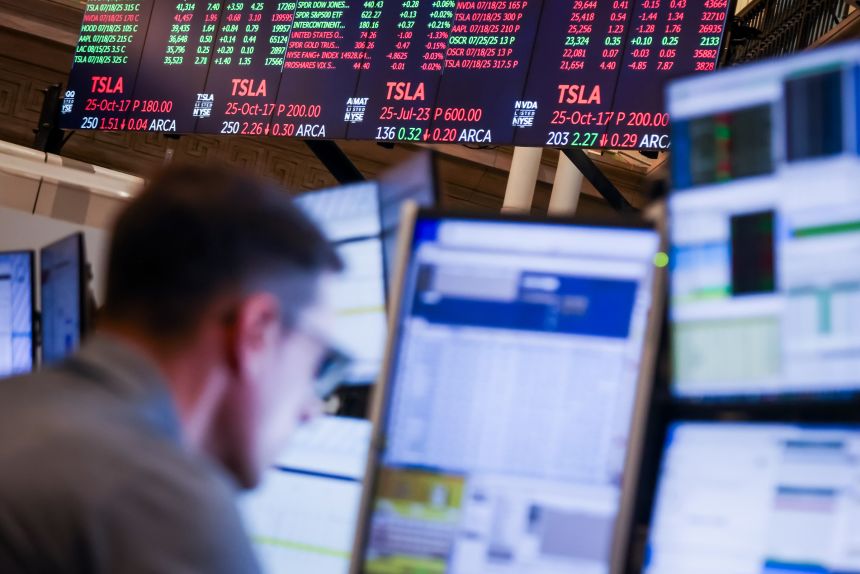A version of this story will appear in CNN Business’ Nightcap newsletter. To get it in your inbox, sign up for free here.
Once upon a time, all of us were taught the story of the Emperor’s New Clothes and its unambiguous lesson about calling out the truth when it’s right in front of your eyes. The emperor was not, in fact, clad in the finest suit. The emperor was naked, a fool who’d been had.
The moral was, more or less: Don’t be a mark, like the emperor who got swindled by couture con artists. Be the kid in the crowd who called the naked man out for being naked.
But it really changes the story if you note that everyone stood to get rich – really rich – if everyone agreed to just go along with it, because hey, the Emperor’s had some pretty nice clothes in the past, so who’s to say if his new duds don’t look as nice?
In short: Wall Street, writ large, has put business fundamentals in a corner and has settled into a kind of cynical vibe-trading in which the goal is always “number go up.”
Consider Tesla, a stock so detached from the company’s actual business some analysts call it the “OG meme stock.”
Its core product, electric cars, is quickly growing stale and losing market share to rivals. But don’t worry, it’s not a car company anymore, Elon Musk has said (despite cars being the only commercially viable, revenue-generating product Tesla offers). No, Tesla is an AI and robotics company now, its future staked to robotaxis (still in development, buggy, years behind Alphabet’s Waymo) and $20,000 humanoid robots (also still in development, and still require a human operator to do the household chores it’s billed to one day do autonomously.)
This week, Bank of America analysts said Tesla’s core automotive business represents just 12% of the company’s total value. Robotaxi is 45% and “full self Driving” — Tesla’s autonomous driving software that doesn’t reliably work and customers don’t reliably want to pay for — is 17%. In short: Well over half of the stock’s value lies in products that either don’t yet exist or don’t exist at scale.

Tesla’s reward for snoozing on its core product and gambling on a nascent technology with no proof of concept? Its stock is up 75% over the past 12 months, near its record high, and it remains by far the world’s most valuable car company, with a $1.5 trillion market cap. Musk, whose partisan outbursts reportedly cost Tesla one million sales, remains the world’s wealthiest person, and could become the first-ever trillionaire.
Sensible investors might say “hey, there’s clearly value here but a stock that trades at 200 times earnings is overhyped and I’m going to sit this one out.” And they’d be right, in the Warren Buffett sense of right.
But they’re not Warren Buffett.
They would also be a lot less rich than if they’d just said YOLO and put their faith in Musk.
That’s a familiar feeling for crypto skeptics. Sure, the product trades on hype, is highly volatile and has limited real-world applications. Who cares! Bitcoin’s price has gone up 700% over the past five years — with plenty of stomach-turning drops along the way — while the S&P 500 is up 110%.
Being a naysayer in this market doesn’t pay the bills. Buying the dip does. All those crypto trolls who taunted skeptics to “have fun staying poor” were not, sadly, incorrect (though we can all agree they were jerks). Crypto has not only stayed alive, it’s practically gone mainstream. Even Jamie Dimon, the JPMorgan Chase boss Jamie Dimon, a longtime critic, has sort of come around, saying earlier this month that blockchain – crypto’s underlying technology — “is real.”
There is almost no “bad” news that can rattle Wall Street anymore, as investors have learned that buying the dip almost always pays off.
That is, of course, until it doesn’t. And no one knows when, or even whether, we’ll hear the record scratch.
“It stands to reason that over time, if investors bought every significant decline, then it would have worked out for them,” Steve Sosnick, chief strategist at Interactive Brokers, wrote earlier this month. “Unfortunately, not everyone has unlimited funds to keep investing, and no one is blessed with an unlimited time horizon.”


